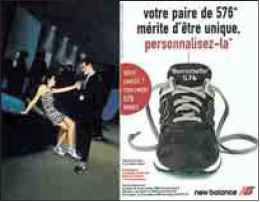The Cultural Environment
Another important aspect of the international marketing environment is the culture of each country. Cultural variables marketers must consider include language, customs, tastes, attitudes, lifestyles, values, and ethical/moral standards. Nearly every country exhibits cultural traits that influence not just the needs and wants of consumers but how they go about satisfying them.
Marketers must be sensitive not only in determining what products and services they can sell foreign cultures but also in communicating with them. Advertising is often the most effective way to communicate with potential buyers and create markets in other countries. But it can also be one of the most difficult aspects of the international marketing program because of problems in developing messages that will be understood in various countries.
International advertisers often have problems with language. The advertiser must know not only the native tongue of the country but also its nuances, idioms, and subtleties. International marketers must be aware of the connotations of words and symbols used in their messages and understand how advertising copy and slogans are translated. Marketers often encounter problems in translating their advertising messages and brand names into various languages. The Heineken ad in Exhibit 20-3 is one example. Although this ad worked well in the United States and other English-speaking countries, the line "you don't have to make a great fuss" could not be translated in a meaningful way into many other languages.
Advertisers can encounter problems with the connotative meaning of signs and symbols used in their messages. For example, Pepsodent toothpaste was unsuccessful in Southeast Asia because it promised white teeth to a culture where black and yellow teeth are symbols of prestige. An American ad campaign using various shades of green was a disaster in Malaysia, where the color symbolizes death and disease.
Problems arising from language diversity and differences in signs and symbols can usually be best solved with the help of local expertise. Marketers should consult local employees or use an ad agency knowledgeable in the local language that can help verify that the advertiser is saying what it wants to say. Many companies turn to agencies that specialize in translating advertising slogans and copy into foreign languages.
Tastes, traditions, and customs are also an important part of cultural considerations. The customs of a society affect what products and services it will buy and how they must be marketed. In France, cosmetics are used heavily by men as well as women, and advertising to the male market is common. There are also cultural differences in grooming and hygiene habits of consumers in various countries. For example, though many U.S. consumers use products like deodorant and shampoo daily, consumers in many other Western countries are not as fanatical about personal hygiene, so consumption of products such as deodorants and mouthwash is much lower than in the United States.
Another aspect of culture that is very important for international marketers to understand is values. Cultural values are beliefs and goals shared by members of a society regarding ideal end states of life and modes of conduct. Society shapes consumers' basic values, which affect their behavior and determine how they respond to various situations. For example, cultural values in the United States place a major emphasis on individual activity and initiative, while many Asian societies stress cooperation and conformity to the group. Values and beliefs of a society can also affect its members' attitudes and receptivity toward foreign products and services.21 Values such as ethno-centrism, which refers to the tendency for individuals to view their own group or society as the center of the universe, or nationalism often affect the way consumers in various countries respond to foreign brands or even advertising messages.22 For many years, consumers in many European countries were reluctant to buy American brands and there was even a backlash against American imagery. In fact, many U.S. companies doing business in Europe were careful not to flaunt their American roots.
One European country, in particular, where American-made products were not well received for many years is France. The French have always been very protective of their culture; for example, they have quotas for French-language shows on TV and music on the radio. As historian Richard Pells notes: "France, like the U.S., has traditionally seen itself as a country with a mission and a country whose culture and civilization is worthy of being exported around the world."23 However, in recent years many American brands have become popular in France, particularly among younger consumers. For example, the French subsidiary of New Balance, the Boston-based athletic-shoe company, experienced strong sales growth in France when its 576 model shoe became de rigueur among the fashion elite (Exhibit 20-4). In recent years, U.S. brands have become popular in many other European countries as well as in Asia. Marketers attribute the rising popularity of many U.S.-made products to the worldwide distribution of American music, films, and TV shows; the growth of the Internet; and the increase in travel to the United States. These factors have made consumers in foreign countries more familiar with American culture, values, and lifestyle.24
Japan is one of the more difficult markets for many American advertisers to understand because of its unique values and cus-toms.25 For example, the Japanese have a very strong commitment to the group; social interdependence and collectivism are as important to them as individualism is to most Americans. Ads stressing individuality and nonconformity have traditionally not done well in Japan, but westernized values have become more prevalent in Japanese advertising in recent years.26 However, the Japanese dislike ads that confront or disparage the competition and tend to prefer soft rather than hard sells.27 A recent study found that Japanese and American magazine ads tend to portray teenage girls in different ways and that the differences
Exhibit 20-4 New Balance shoes have become very popular in France

Continue reading here: The Political Legal Environment
Was this article helpful?


